- Home
- Used Car Guides
- How to Charge an Electric Vehicle- FAQs
Frequently Asked Questions: How to Charge an Electric Vehicle
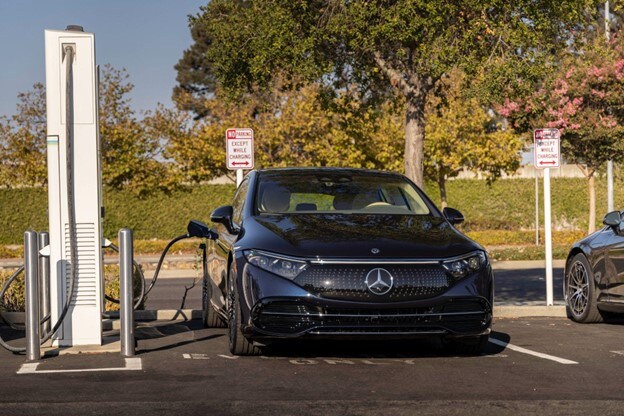
One of the many benefits of owning an
all-electric vehicle (EV) is that you'll never need to visit a gas station. And
charging it is as simple as plugging in a power cord, just like any other
household electronic device.
But since electric vehicles are essentially a complex, self-contained power plant, there's value in understanding the various aspects that affect charging performance, battery health, and cost of ownership.
Keep reading for answers to some of the most commonly asked questions regarding the charging and regular maintenance of an all-electric vehicle.
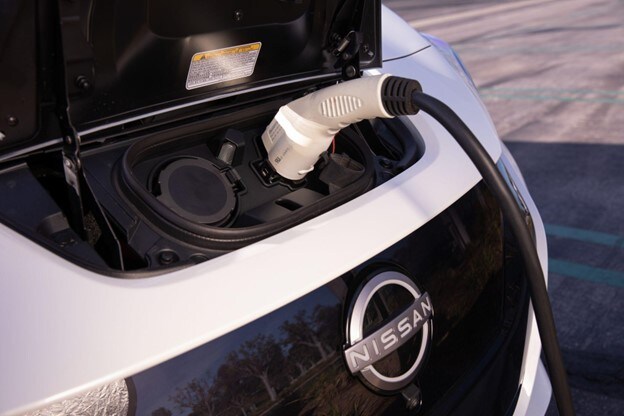
What Are the Basics of Charging an Electric Vehicle?
Every electric vehicle can be charged by plugging in the appropriate cable into any household power outlet. This method is called Level 1 charging, and is accomplished with the power cord that's included as part of the lease or purchase of the electric vehicle.This is the most convenient form of charging because all you need is access to a standard electrical outlet found in the garage or on the outside of your home - there's no setup or modifications required. But since the battery capacity of an electric vehicle is quite large, and household electrical systems aren't industrial strength by nature, Level 1 charging is the slowest method of replenishing power.
Using the Nissan LEAF as an example, Level 1 charging provides approximately 5 miles of range per hour. So with a range of up to 226 miles for the 2022 LEAF S PLUS, that means a fully depleted battery could take around 45+ hours to charge to 100%.
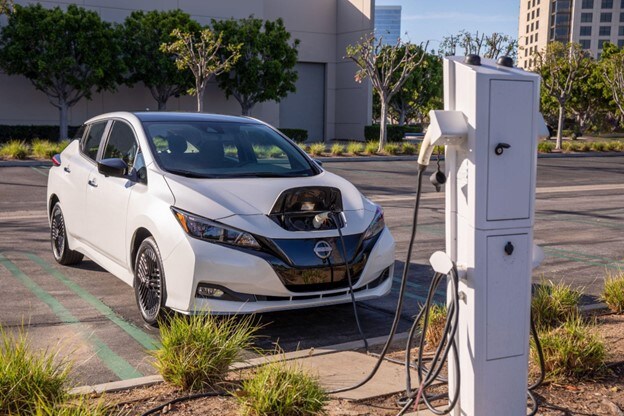
What Is Level 2 Charging?
Waiting nearly two days to charge your vehicle is obviously not ideal, which is why all-electric vehicles offer a faster charging speed obtained via Level 2 charging. This higher power delivery is most commonly found in commercial parking lots, in malls or shopping centers, and also designated EV parking spaces in office complexes.Some Level 2 charging stations are offered as complimentary perks, but others may require a paid subscription or one-time payment to activate charging - the electricity you're using isn't free, after all.
Level 2 charging significantly speeds up the process, with many electric vehicles reaching an optimal operating range after about 4 to 8 hours of being plugged in. Keep in mind that the power delivered by Level 2 charging stations can vary, and ultimately, your vehicle is in control of how quickly it can charge.
The speed and convenience of Level 2 charging can be had in your home too, but it may require professional installation of charging equipment, and possibly modification of your home's electrical panel if there isn't enough capacity.
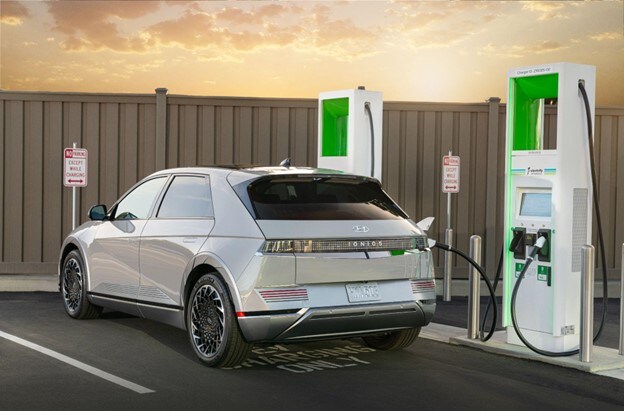
What Is Quick Charging?
"Quick Charging" or Level 3 charging is the fastest form of recharging available today, and can only be found at dedicated stations which require a subscription or payment. But the benefits are well worth the cost, especially if you're taking a long road trip or forgot to charge your vehicle the day before.
Today's newest electric vehicles are really able to take advantage of Level 3 charging, and one of the best examples is the 2022 Hyundai IONIQ 5. When connected to a 350 kW DC fast charger, the 2022 IONIQ 5 is capable of recharging its battery from 10% to 80% in just 18 minutes!
And because Level 3 charging is so specialized, it's never offered as a complimentary service. But many manufacturers will often include a limited-time subscription when you purchase a new electric vehicle so you can enjoy the best benefits of EV ownership. For example, the 2022 Hyundai IONIQ 5 comes with two years of unlimited 30-minute complimentary charging sessions at Electrify America stations across the nation.
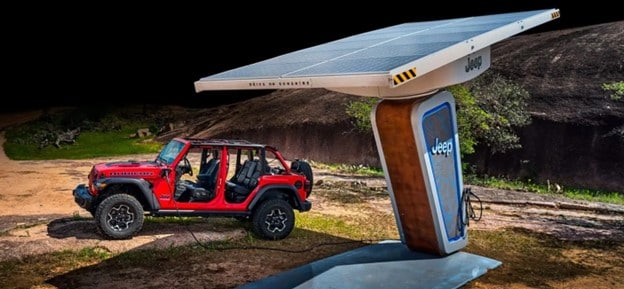
Where Are Charging Stations Located?
With electric vehicles becoming more popular, charging stations are easier to find than ever, especially if you live in a large metropolitan area. Many major malls, grocery stores, and office buildings have dedicated EV parking spaces with charging stations, and more "EV rest stops" are popping up alongside America's most popular freeways.
EVgo, Electrify America, and ChargePoint are examples of the growing networks of charging stations in the country, and finding specific charging stops is as simple as visiting a website or mobile app. Many EVs will already have these charging locations programmed in the navigation system, and Android Auto or Apple CarPlay will also have this information on hand.
Support for electrification has also extended to key trails in the U.S. thanks to Jeep's solar-powered charging stations. Now, you can make sure your battery is fully charged before taking on an adventure in a 2022 Jeep Wrangler 4xe.
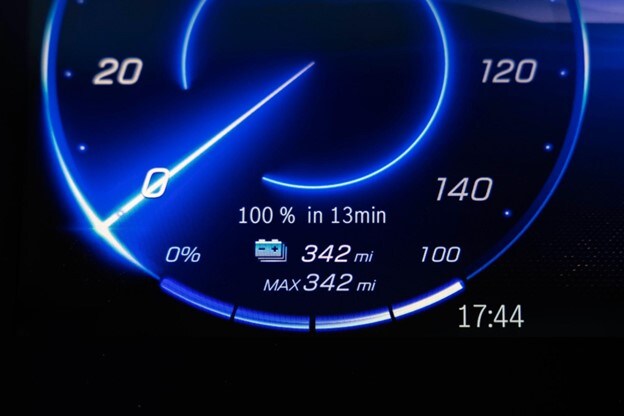
When Is the Best Time to Charge an Electric Vehicle?
Just like with your smartphone, the best time to charge your electric vehicle is, honestly, whenever you have convenient access to power. This could be when you're at work, shopping for groceries, or simply parked at home for the evening.
Because the element of time is unavoidable with electric charging, many drivers like to top off whenever they can, to avoid ending up with a low battery and the dreaded "range anxiety." When charging at home, it's also wise to utilize the EV's built-in scheduling function to automatically charge during non-peak hours, which reduces electric bill costs and network load.
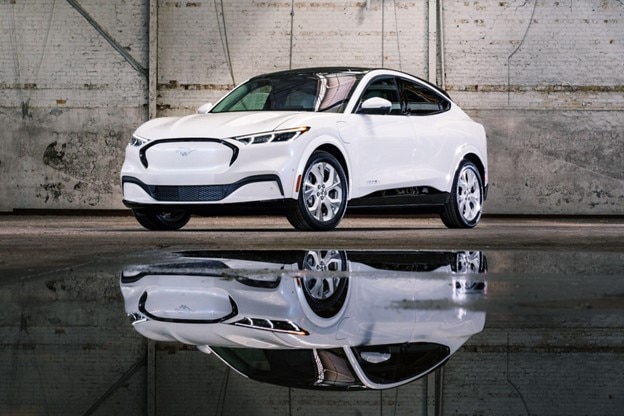
Best Practices for Electric Vehicle Maintenance
Electric vehicles have significantly fewer moving components than their gasoline-powered counterparts. To put that in perspective, there are roughly 50 moving parts in a typical EV, versus the over 1,500 found on traditional cars. So with less complexity and mostly self-contained systems in electric vehicles, "maintenance" primarily comes down to taking care of the battery.
And the good thing is that there's no special technique required for caring for your car's battery. Just like a smartphone's battery, you'll want to typically operate and keep your EV between 20% and 80% charge. This means don't let the battery level get too low, and don't frequently charge it to 100%, unless you actually need the full range for a long trip.
Today's modern electric vehicles come with smart charging systems that do most of this work for you, or you can manually set the battery to stop charging at 80% on a daily basis. All in all, an electric vehicle's motor, battery, and auxiliary systems require little to no regular maintenance.
Just treat your car with care and respect, and it should last you for a long time. Plus, the government mandates that all EV battery packs be covered by warranty for at least 8 years or 100,000 miles.
Browse electric vehicle inventory at the AutoNation USA location near you.